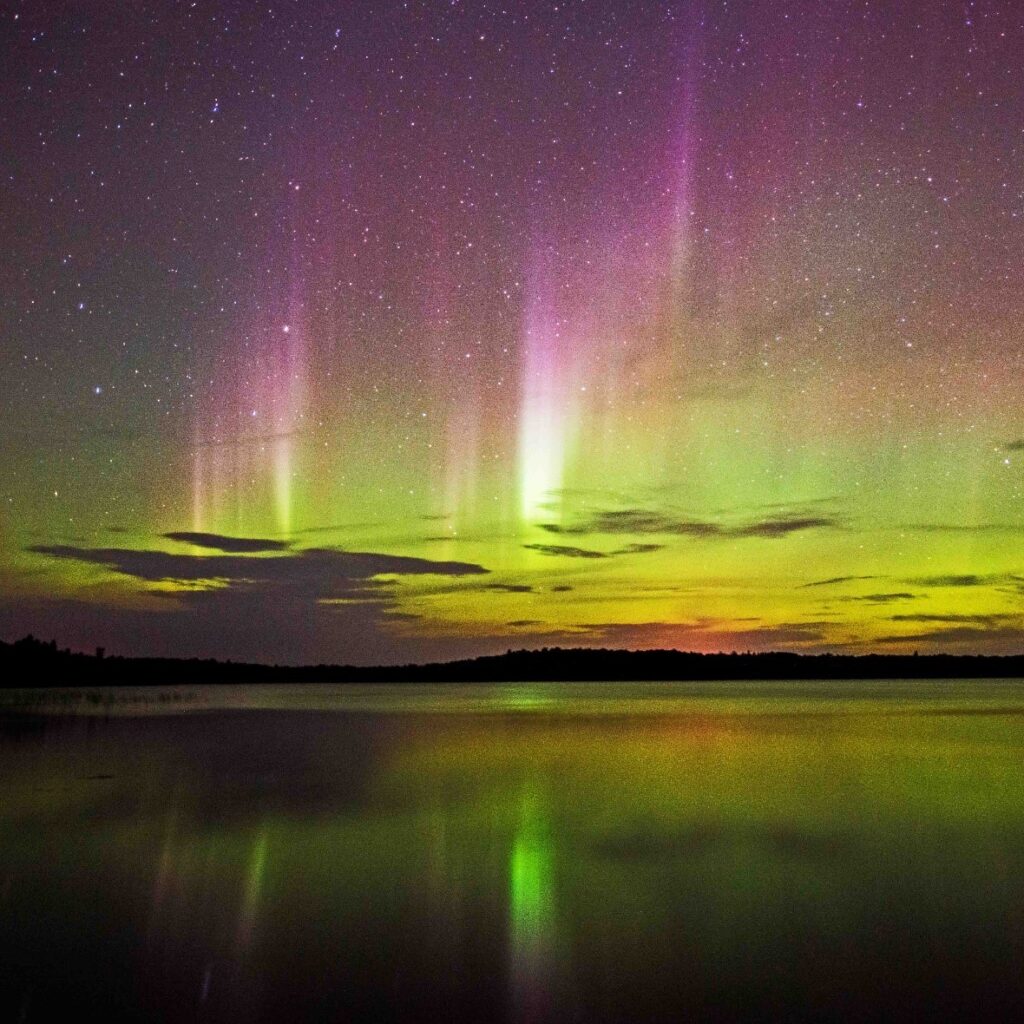
According to NASA scientists, 2024 is shaping up to be a super season for the aurora borealis in Minnesota and Ontario, better known as the northern lights. Because of major disturbances from solar storms, experts say that the season could experience peak displays through mid-2025. The current cycle we’re in, known as solar maximum, means that people all over northern Minnesota may see the northern lights.
In 2019, NASA announced the end of a solar minimum cycle when sunspots were fewer. This marked the beginning of a new 11-peak cycle where the sun’s activity has been increasing, as indicated by a larger volume of sunspots.
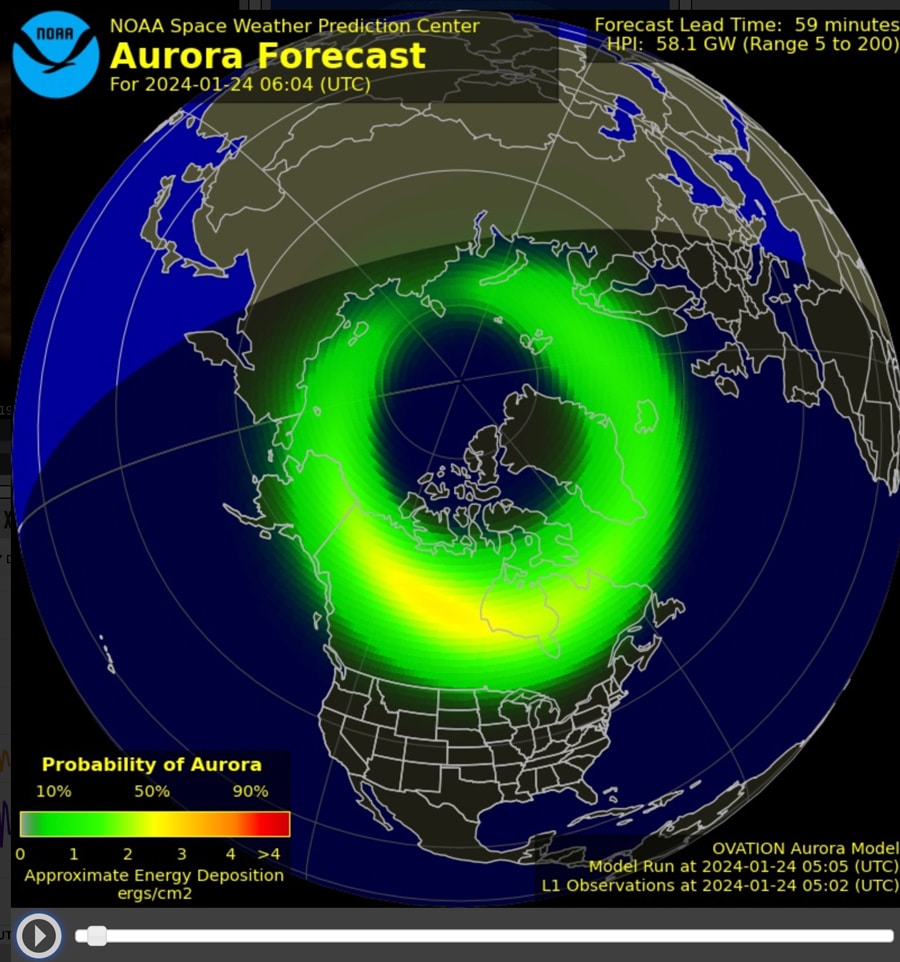
“With solar minimum behind us, scientists expect the sun’s activity to ramp up toward the next predicted maximum in July 2025,” said Doug Biesecker, panel co-chair and solar physicist at NOAA’s Space Weather Prediction Center (SWPC) in Boulder, Colorado.
To understand the origin of the northern lights, it’s important to mention that it starts with the sun’s upper atmosphere. Explosions of plasma mass shoot out from the hot surface. These coronal mass ejections or CME’s mix with intense solar winds. When they collide with the earth’s magnetic field, they create dramatic curtains of light. Enlarging as they move away from the sun, these solar storms can reach the earth in a few days.
Hovering over both poles of the earth, the “auroral zone” as scientists describe it, fluctuates and thickens depending on the power of the solar storm. When the zone expands, it moves further south, causing people in the southern areas of the region to potentially have great visibility.
Voyageurs National Park in northern Minnesota notes that the aurora will, “appear as streaks or cloud-like patches of light. Depending on their intensity, the lights might be just a patch of band on the northern horizon; at higher intensities, the northern lights can fill the entire sky.”
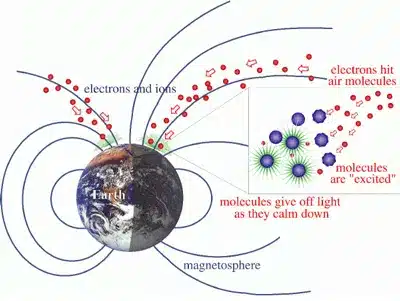
Measuring solar activity
The earth’s geomagnetic activity is driven by solar activity. When the earth’s magnetic field is active, the aurora is brighter and more southerly. The activity is measured by the planetary K index or Kp. The index measures the activity from 0 to 9 and a lower number indicates that the aurora will be dimmer and non-existent to the naked eye. Kps higher than 6 will be visible to people in the upper Midwest. Extremely high numbers of 8 or 9 signify brilliant northern lights.
Forecast Alerts
Thanks to scientific sources, and tracking apps, it’s even easier for people to follow solar forecasts. The National Oceanic and Atmospheric Administration posts up-to-date interactive maps. Mobile users will appreciate My Aurora Forecast & Alerts where they can view Kp index numbers and set up alerts.
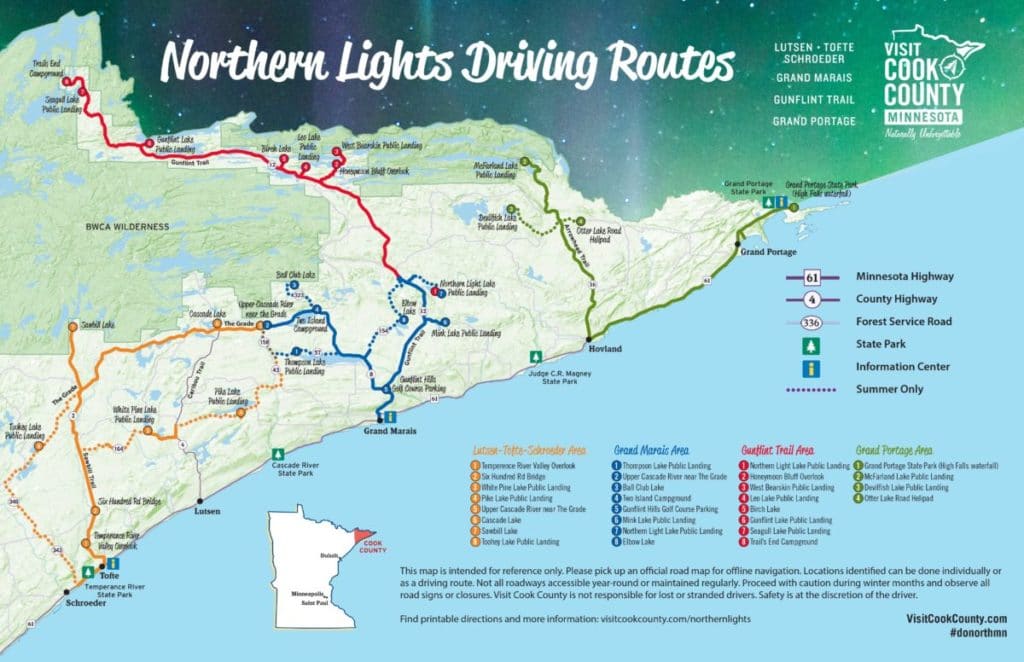
Tips for viewing the aurora
- The northern lights are most active between September and April.
- Look north! Identifying the Big Dipper is a great way to orient yourself.
- The sky must be clear.
- The aurora can appear at any time of night.
- Lakeshores within the BWCA, Quetico, or the Superior National Forest are prime locations.
- There will be a spectrum of colors, with green being the most common.
- The aurora borealis varies in strength and intensity, observers should be patient, letting their eyes adjust.
- Those carrying photographic equipment will see nuances of color in their images not visible to the naked eye.
- Dress for the weather and bring a warm blanket.
Strong projections for an active geomagnetic season mean it’s likely the aurora will be a prominent feature in northern Minnesota this year. With parks in the Quetico Superior region designated as dark sky sanctuaries, now is a great time to head north. Long hours of darkness during the winter increase your chances of seeing them.
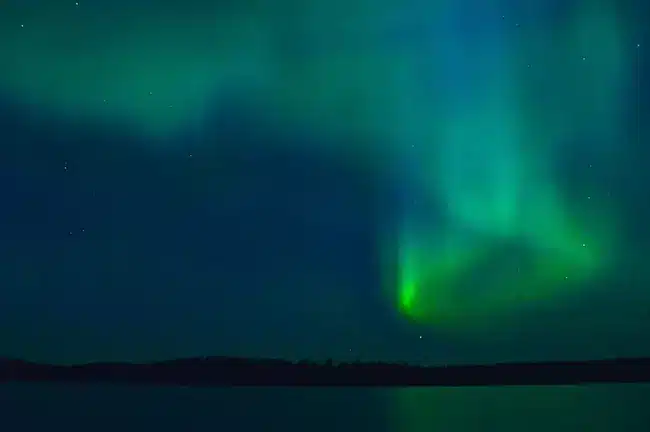
More information:
- 2024 may bring the best auroras in 20 years – National Geographic
- Solar Cycle 25 Is Here. NASA, NOAA Scientists Explain What That Means – NASA
- Tips on viewing the aurora – National Oceanic and Atmospheric Administration
- Northern Lights – Voyageurs National Park
- Quetico: an International Dark Sky Park
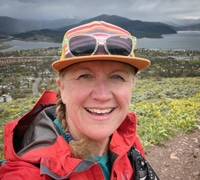
Wilderness guide and outdoorswoman Pam Wright has been exploring wild places since her youth. Remaining curious, she has navigated remote lakes in Canada by canoe, backpacked some of the highest mountains in the Sierra Nevada, and completed a thru-hike of the Superior Hiking Trail. Her professional roles include working as a wilderness guide in northern Minnesota and providing online education for outdoor enthusiasts.

